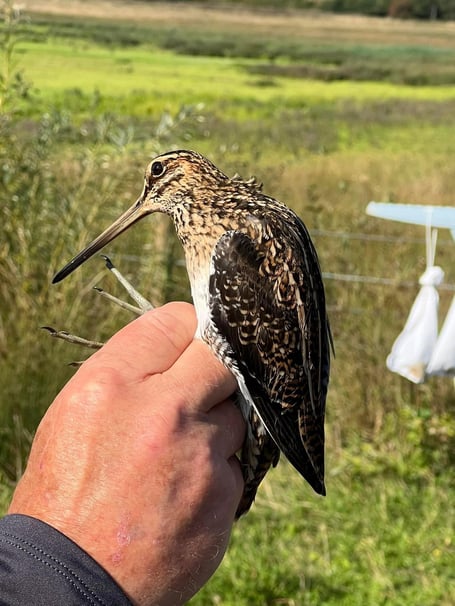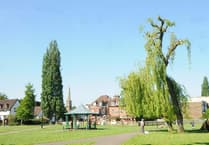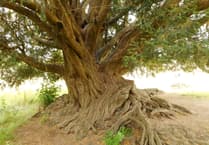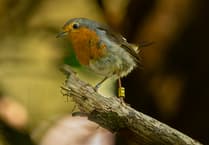Alan Wynde has been appointed Tice’s Meadow Bird Group (TMBG) ambassador for Farnham.
This is the first in a series of articles about the biodiversity of the nature reserve near Runfold and the seasonal changes which occur there.
“I write this in the week that children are returning to school for a new academic year, the leaves are beginning to turn, and there is an autumnal feel in the air.
“But autumn is in full swing for our birds. Seven pairs of Swifts which successfully nested in the Swift Tower are long gone to warmer climes, while the Reed and Sedge Warblers which built nests in the reedbeds are off to West Africa for the winter.

“Swallows and Martins still remain hawking over the Workings and hoovering up insects, and a few Hobbies are still around, mainly hunting dragonflies.
“The Hobby is one of our smallest raptors, capable of taking a Swallow on the wing. Most will soon be off to Africa soon, but there are reports that a few Barn Swallows, as we are now told to call them, will winter on the south coast of England. It is to be hoped that it is a mild winter.
“Meanwhile the intrepid group of birders who frequent Horton’s Mound will be scanning the meadow for passerines on passage migration such as Yellow Wagtail, Wheatear and Whinchat.
“Those who are more interested in wading birds will hope to see both Green and Wood Sandpiper foraging at the water's edge. Both species are flying from their breeding grounds in Scandinavia to winter in south west Europe or Africa, although a few pairs of Wood Sandpiper do breed in Scotland.
“A wader which overwinters rather than refuelling and flying on is the Snipe, a strange looking bird which has a very elongated beak, which allows it to deeply probe mud in search of worms. Snipe used to be fairly common breeding birds in England, but due to habitat loss the thirty or so which will overwinter at Tice's Meadow probably fly in from Scandinavia.
“We are also looking forward to the return of significant numbers of Lapwing to spend winter at Tice's. Sadly, this is now a Red-listed species, mainly due to changes in agricultural practices.
“The classic nest sites were bare, untilled earth, or among short swarded cattle grazed grass. Now cereals are usually autumn planted, so there is no bare earth, and pasture is heavily fertilised to promote rapid growth, hence earlier mowing, leading to nest destruction.
“The fact that many of the birds mentioned are endangered means that places like Tice's Meadow are very special, and our local councils are to be congratulated in having the foresight to purchase the site and preserve it for nature and us.
“If you would like to know more about the Tice's Meadow Bird Group, and how you can join in with their award-winning volunteering and biodiversity monitoring, visit www.ticesmeadow.org or even better visit the reserve which has open access and is free.”









Comments
This article has no comments yet. Be the first to leave a comment.